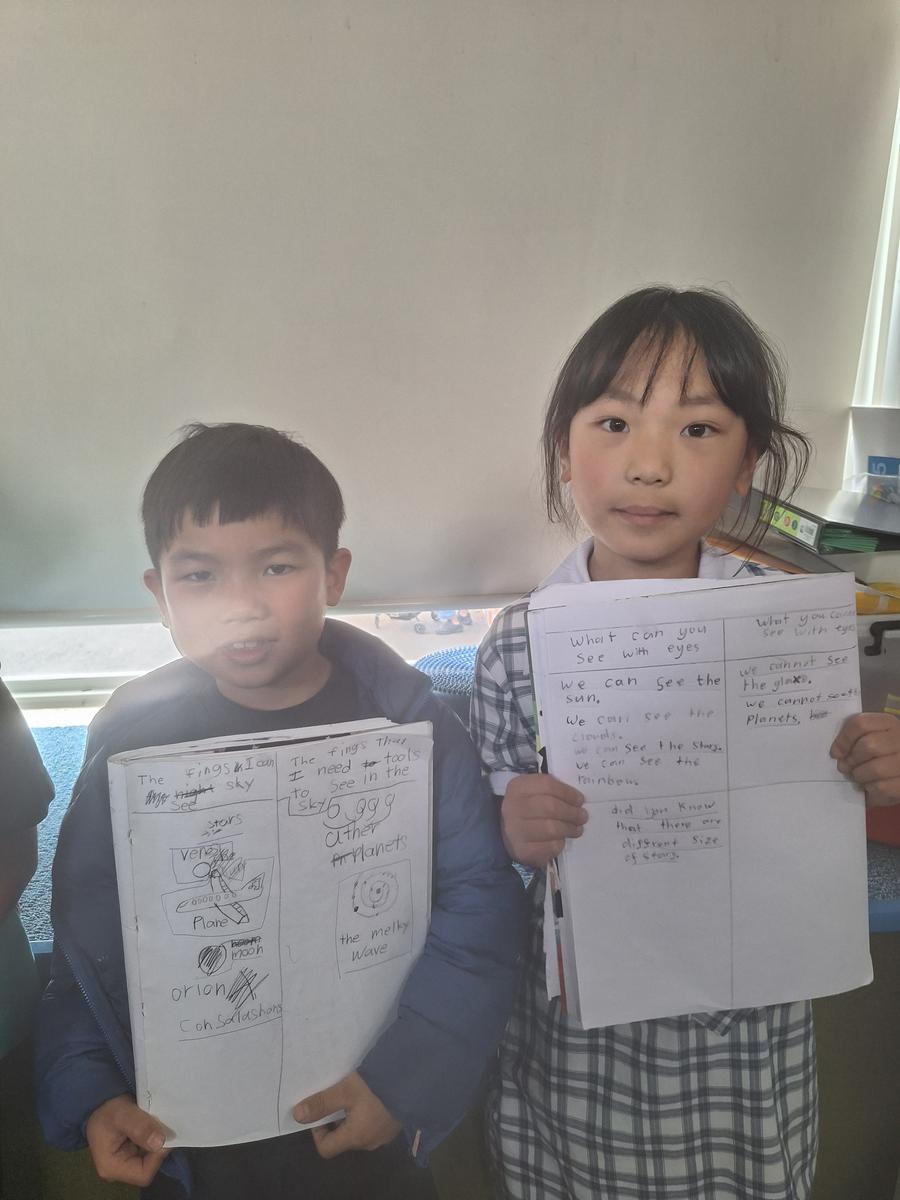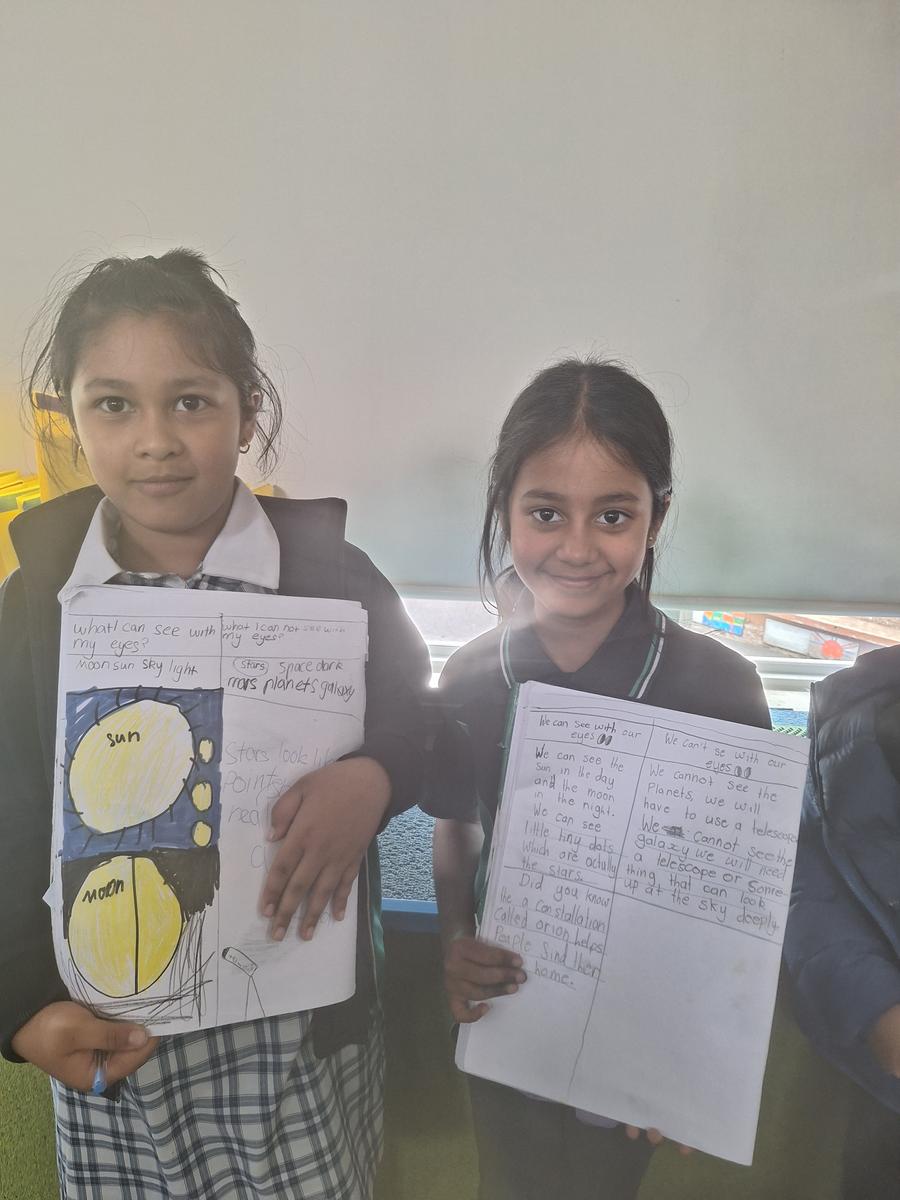1D
By Eunice Lye
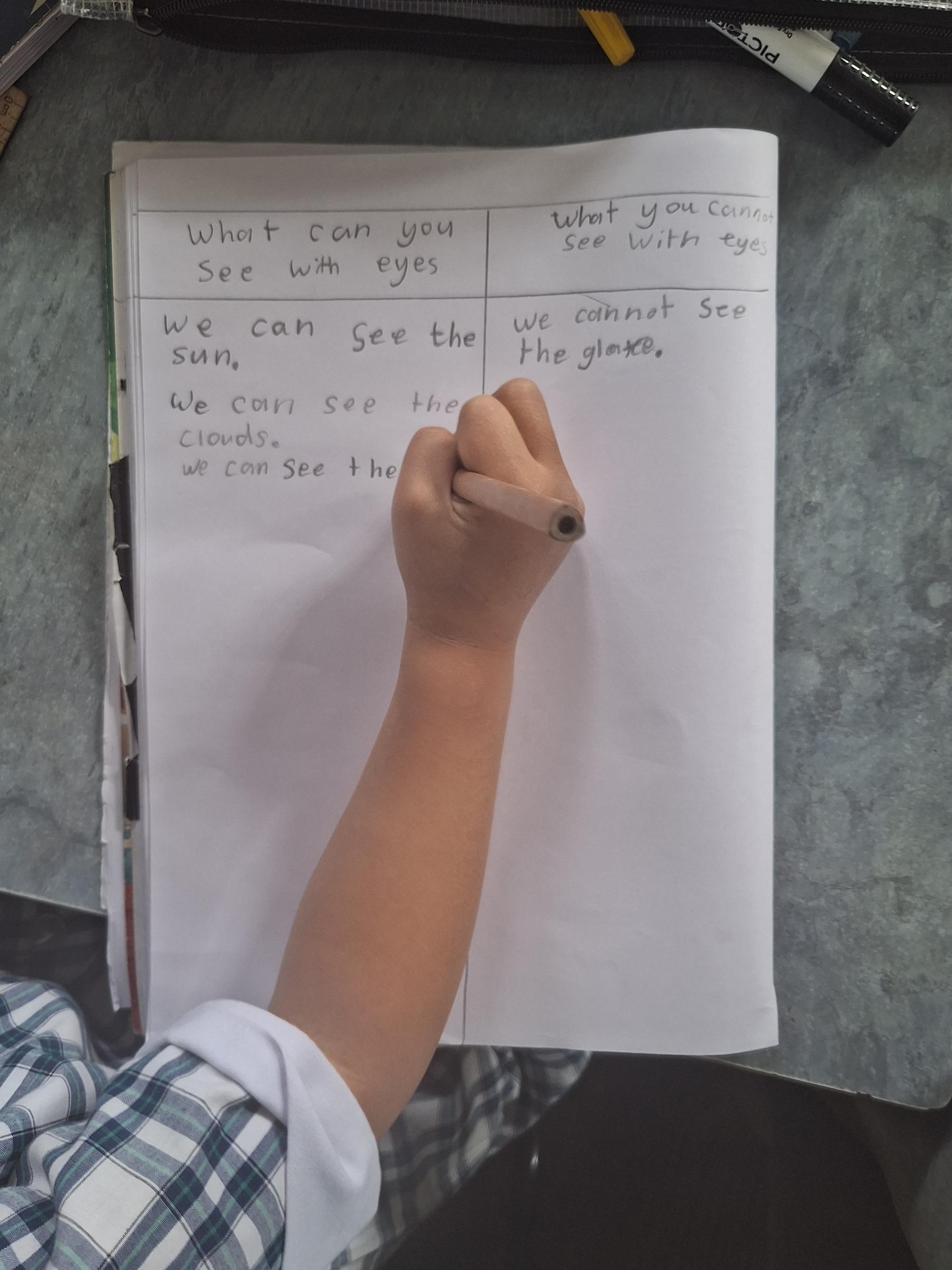
1D
By Eunice Lye
What are we learning in Inquiry?
In Inquiry, 1D has been exploring the big question: How do changes in the sky affect us? Through hands-on crafts and real-time observations of the moon, sun, and stars, students learned about the differences between the night and day sky, how the sun’s patterns affect our days, and how the moon changes shape across its phases. They also compared the sun and the moon to deepen their understanding of the relationship between the sun, the moon, and the Earth.


This week, students discovered constellations—patterns made by stars in the night sky. Even though the stars are far apart, people imagine lines between them to form shapes or pictures, such as animals, objects, or people. These star patterns help people find their way, tell stories, and recognise locations in the sky. Students also learned that stars don’t really have points; they are round balls of hot gas, like our Sun, and only appear pointy because of the way their light shines from far away. Some stars can be seen with our eyes, while others are too distant or faint to see without tools like telescopes or space cameras. Learners recorded what they could and couldn’t see in their Inquiry books and reflected on their new learning.
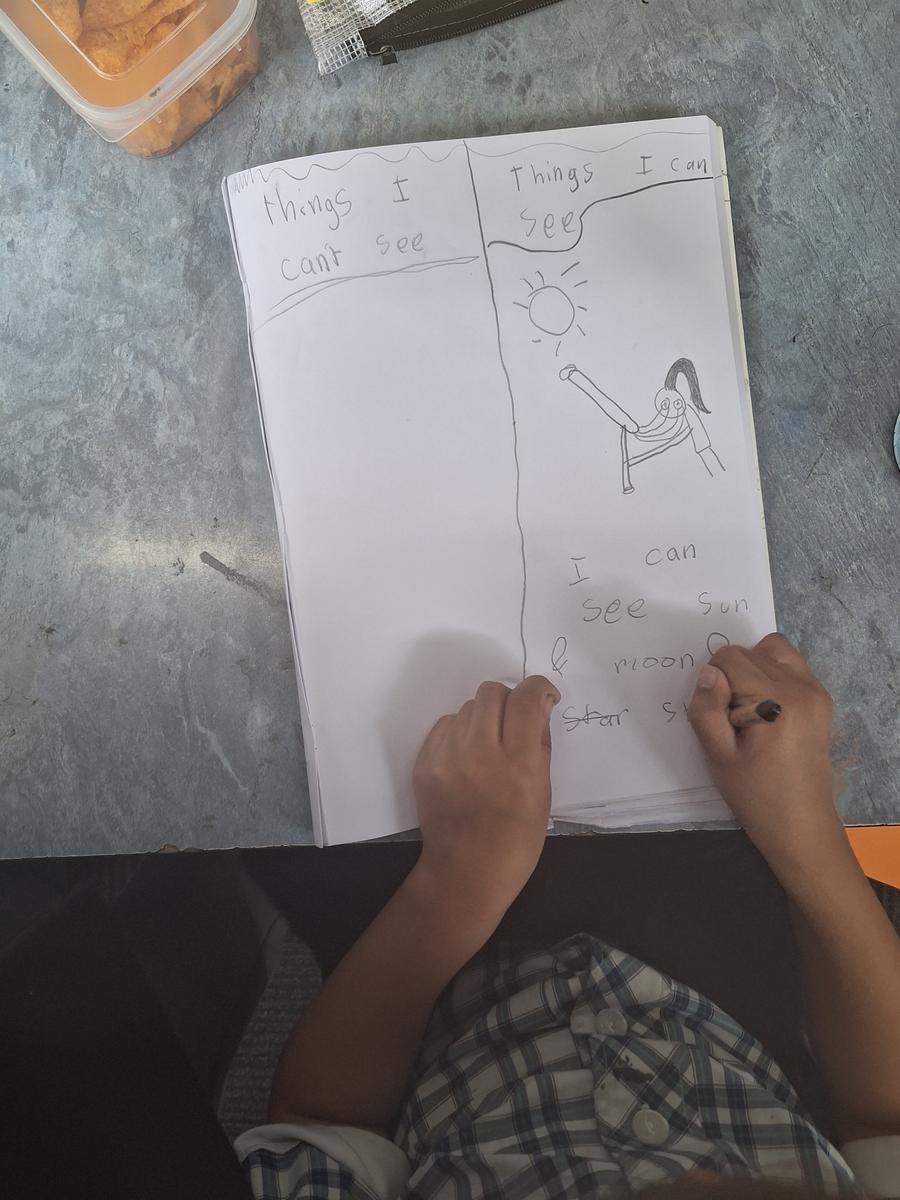
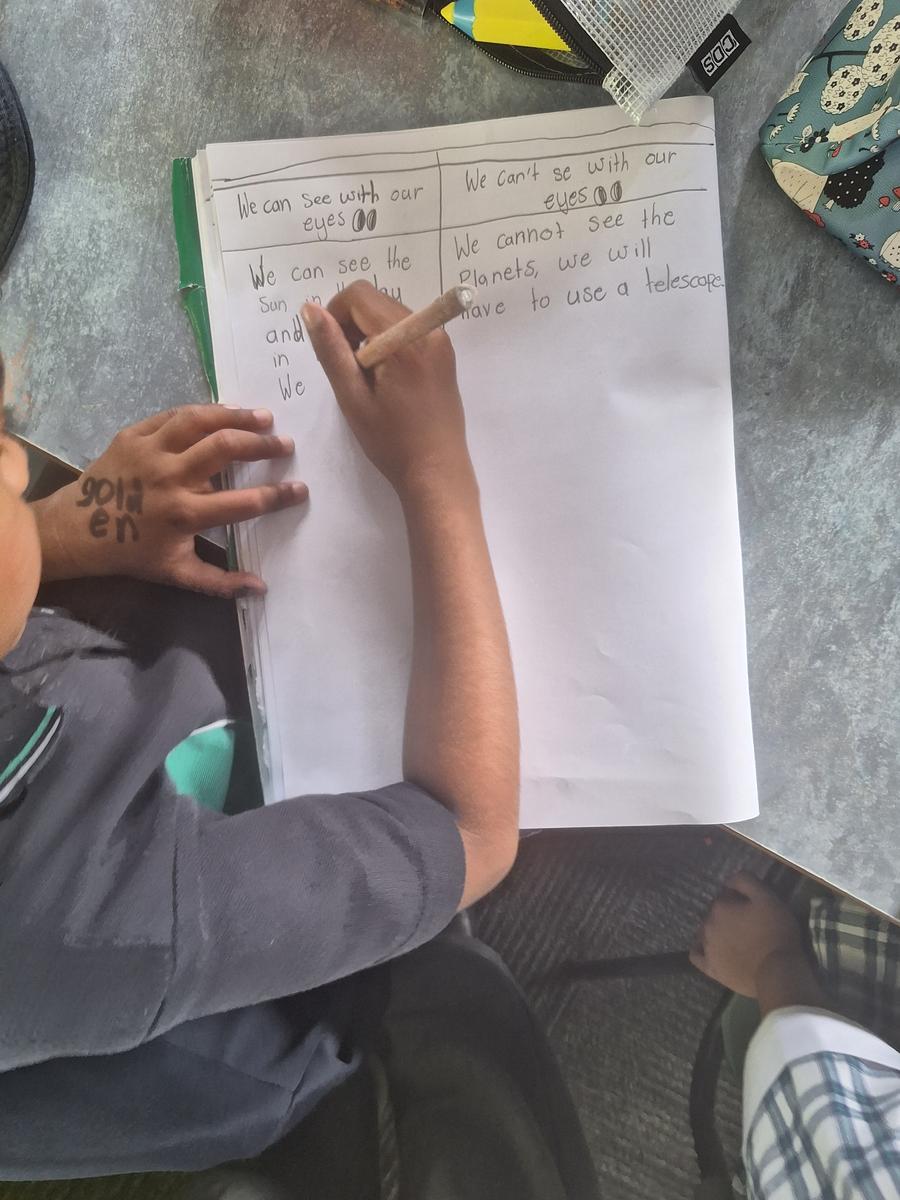


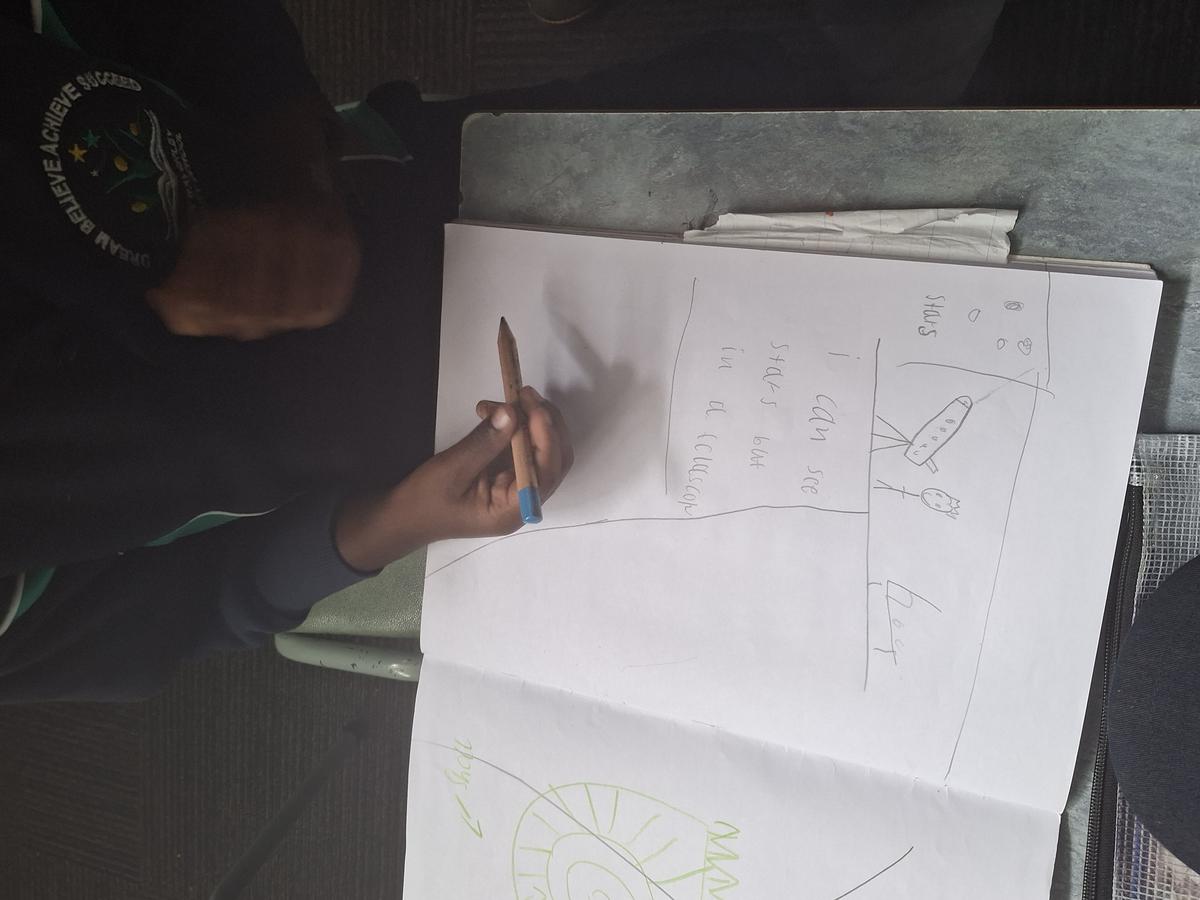

While reflecting on their learning, the following 1D Students shared:
Ashley: “We can see the sun. We can see the stars. We cannot see the galaxy. We cannot see the planets. Did you know that there are different sizes of stars?”
Tanisha: “Stars look like they have points, but in real life they're big, hot gas like a tennis ball.”
Helios: “I can see Venus, the plane, the moon, Orion constellation. But I cannot see the Milky Way.”
Tiana: “We can see little, tiny dots which are the stars. We cannot see the galaxy, so we will need a telescope or something that can look up at the sky deeply. Did you know that a constellation called Orion helps people find their way home?”
